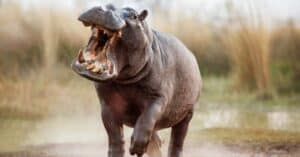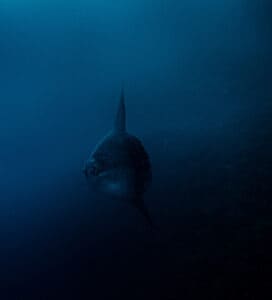While oceans, lakes, and rivers are teeming with life, the water isn’t for everyone. Many species of birds, mammals, reptiles, and amphibians are natural swimmers, but swimming isn’t the forte of every animal. When it comes to sink or swim, some animals just sink. But which animals are aquatically challenged? Let’s dive into this comprehensive list of 16 animals that can’t swim.
1. Giraffe
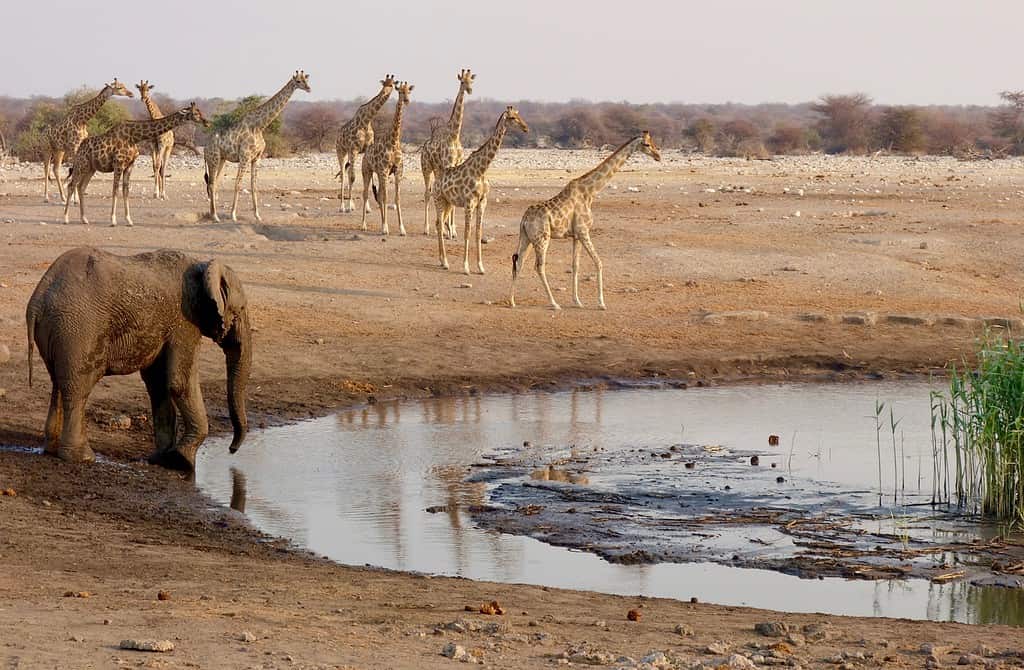
Although giraffes need watering holes to survive, they are rarely seen in water.
©Sonse / CC BY 2.0 – License
While giraffes can easily use their height to look out over the African plains, that same height prevents them from being able to swim. Since giraffes are very rarely seen in water, determining whether or not these animals can swim became a job for the experts. Researchers created a three-dimensional mathematical model to see if it would be possible for giraffes to swim. The answer was a hard no.
The study found that the giraffe’s heavy forelimbs and shoulders would drag the front half of the animal down into the water. This would force the giraffe to hold its neck horizontally, preventing it from being able to move it. It wouldn’t take long before the animal would sink and drown.
2. Gorilla
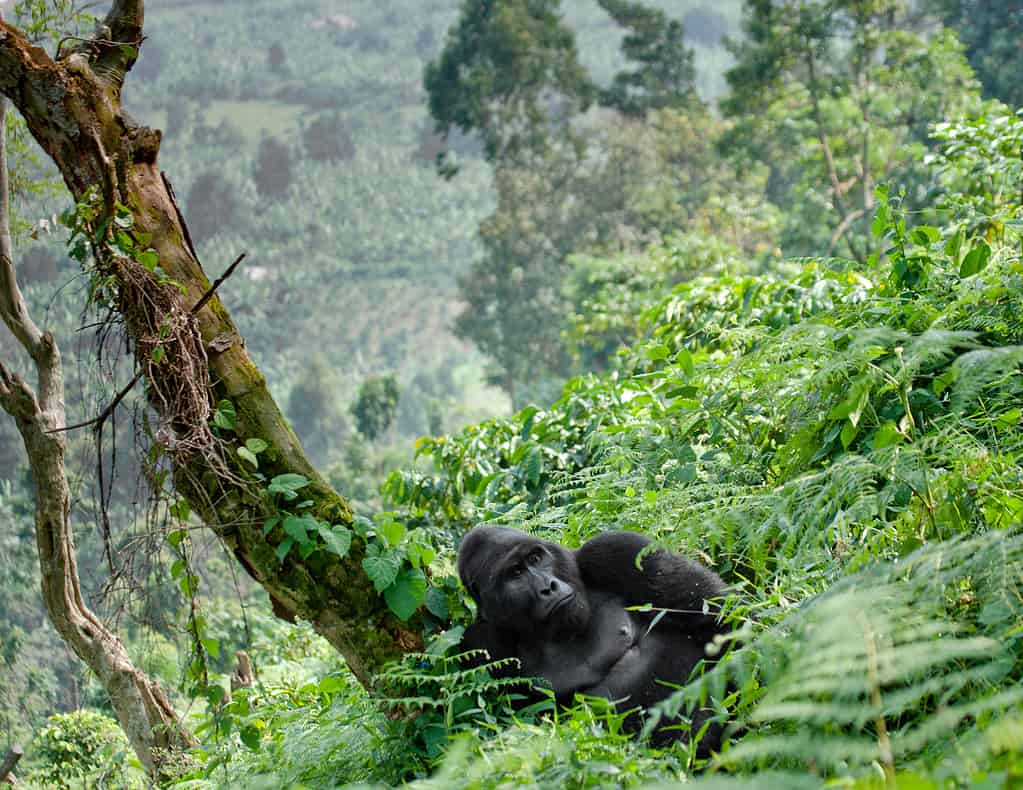
In addition to avoiding bodies of water, gorillas also dislike the rain.
©ANDREYGUDKOV/iStock via Getty Images
Humans are adept swimmers, but our close relative the gorilla is not. This is primarily due to their lack of buoyancy. The gorilla’s dense, strong body has a low body fat percentage. While they are high on muscle, they are low on the fat that helps other animals float.
As a result, gorillas generally avoid large bodies of water. They can wade through shallow water but are cautious about entering it. To ensure they won’t go in over their heads, gorillas use sticks to gauge the depth of water before they enter it.
3. Hippopotamus
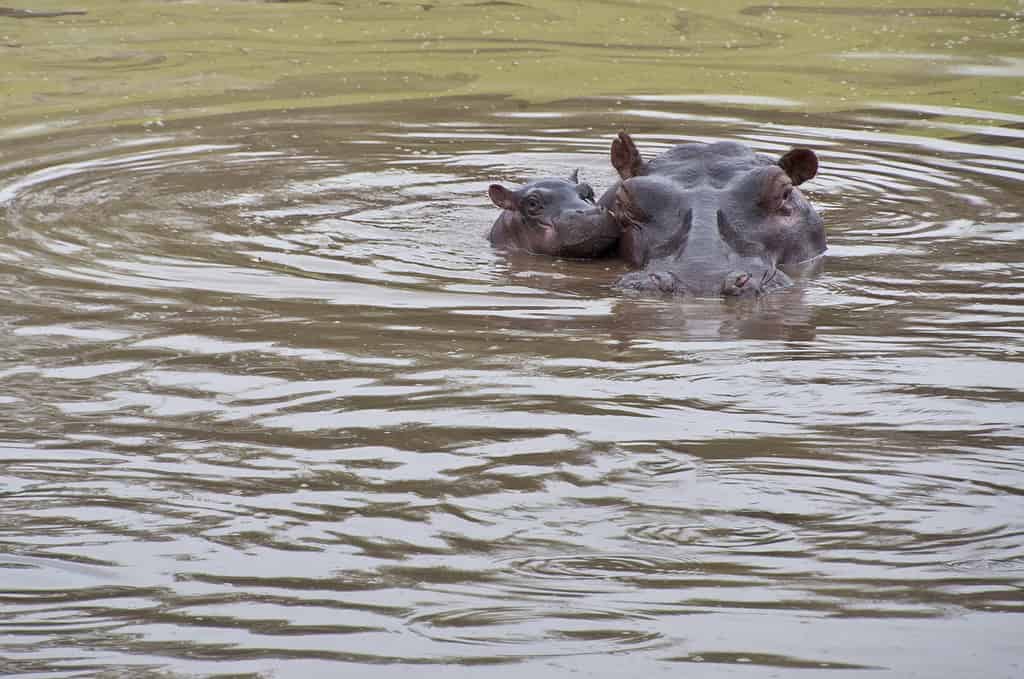
While hippos spend most of their time in the water, they cannot swim.
©iStock.com/nwbob
You’d think an animal that spends much of its time in water would be a strong swimmer, but hippos are not. Hippos have extremely heavy bodies and a dense bone structure that causes them to sink in water. One of the heftiest land mammals, hippos can weigh up to 9,900 pounds (though most average 3,000-5,000 pounds). This weight prevents them from floating.
However, their weight comes in handy when they want to move around a riverbed. Hippos use their powerful legs to propel themselves forward through the water, walking along the bottom of bodies of water.
4. Chimpanzee
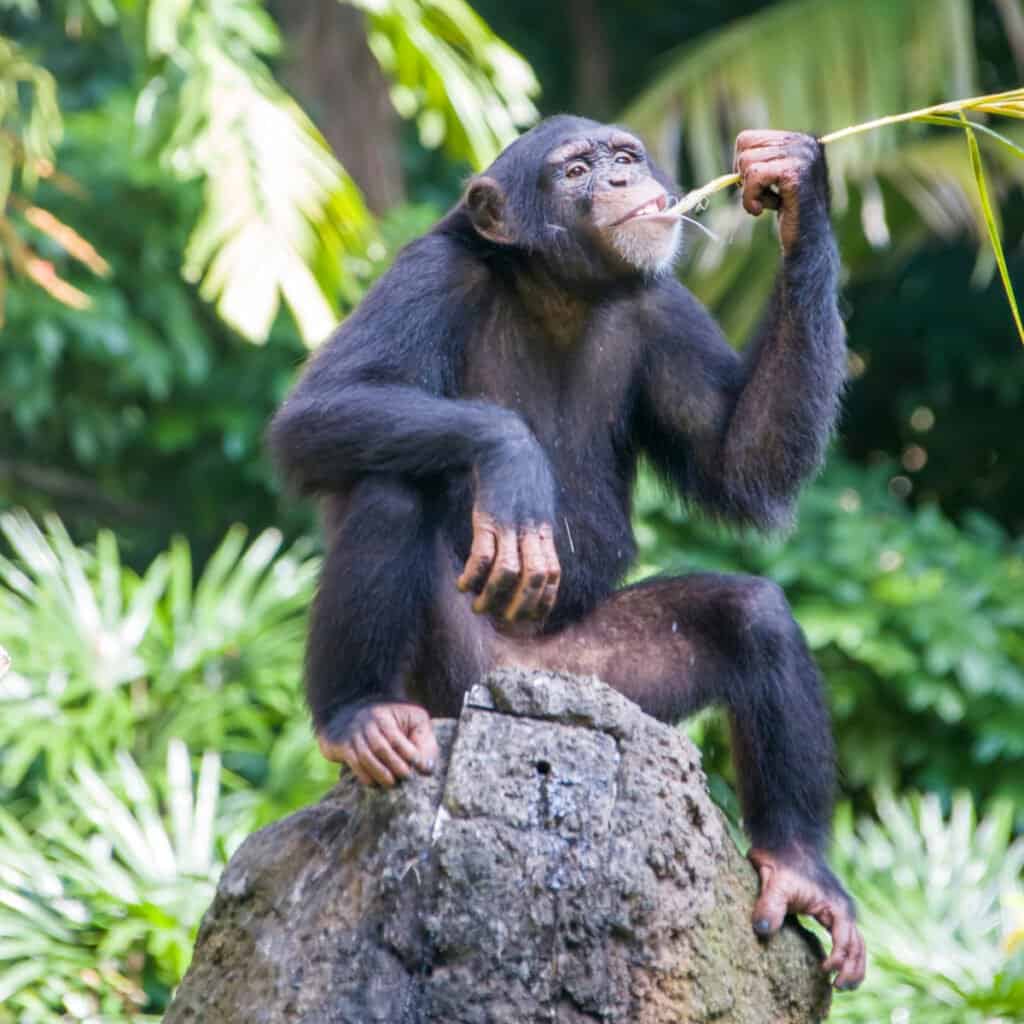
Chimpanzees are adept at using tools to get food and solve problems.
©Danny Ye/Shutterstock.com
Like the gorilla and other great apes, the chimpanzee is not a swimmer. They also have low body fat ratios, decreasing their natural buoyancy and preventing them from floating. The chimpanzee’s heavy upper body makes it difficult for it to stay upright and keep its head above water.
As such, chimpanzees generally avoid large bodies of water. In addition to the potential for drowning, deep water also disguises the presence of dangerous predators that could attack a chimp.
5. Frigatebird
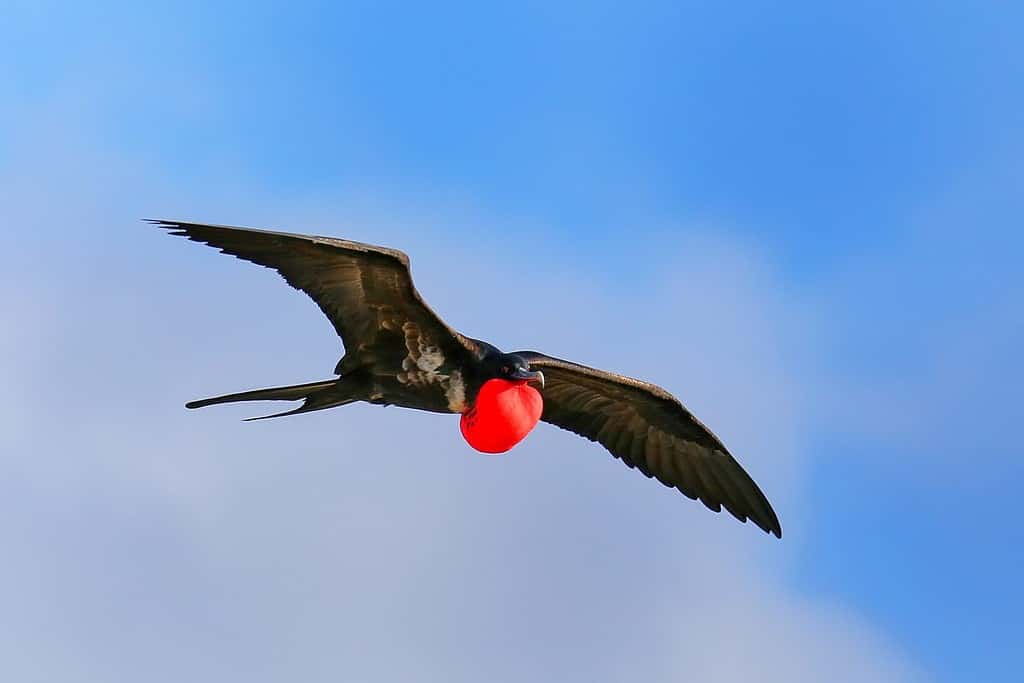
Frigatebirds are talented flyers and can soar for weeks at a time.
©Don Mammoser/Shutterstock.com
For a bird that spends its life on ocean coastlines, the frigatebird is very unprepared for water. Frigatebirds are not waterproof like other seabirds and diving birds. If the frigatebird’s feathers get wet, it becomes heavy and will drown. Although frigatebirds eat fish, they cannot dive for them. Instead, they skim the surface of the water during fish-feeding frenzies or steal food from other birds.
Since frigatebirds can’t land on water, they have adapted to be incredibly strong in the air. Some frigatebirds have been recorded staying aloft for up to two months and can cover over 300 miles per day.
5. Camel
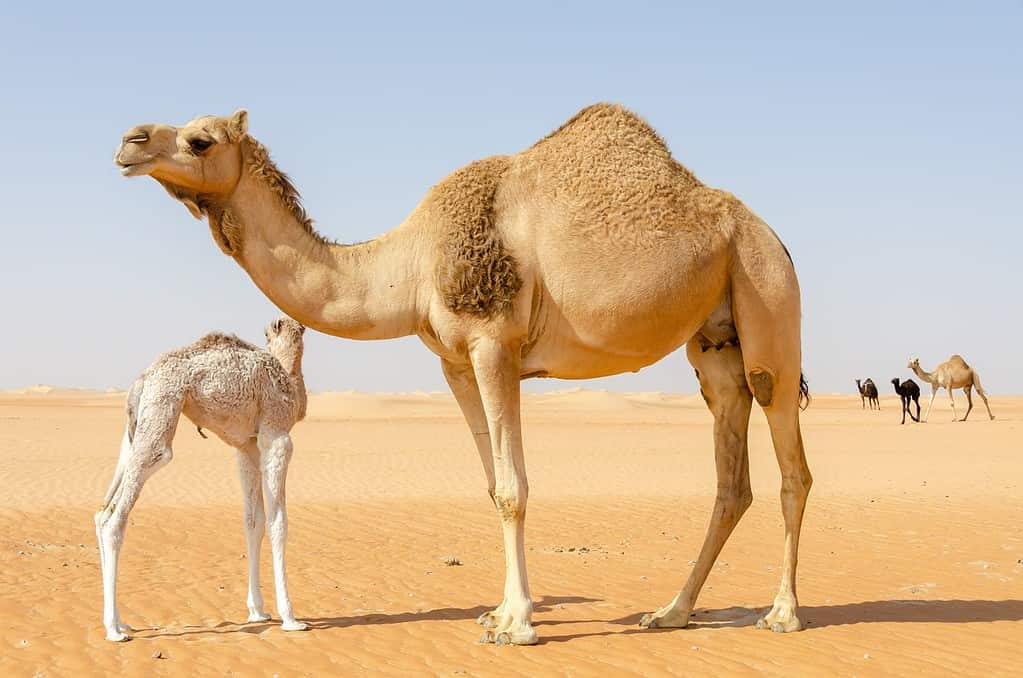
Some giraffes have been recorded going six or seven months without water in winter in the Sahara.
©Lotta Axing/Shutterstock.com
There’s some debate about a camel’s ability to swim. Since camels live in incredibly arid climates and are not regularly around bodies of water, there’s no need for them to swim. As such, most camels do not go swimming.
However, there are swimming camels in one region. Kharai camels found in Kutch in India subsist on a diet of mangroves and aquatic plants and are well adapted to spending time in salty waters. Some Kharai camels have been reported swimming for up to three hours while navigating between islands.
6. Pug
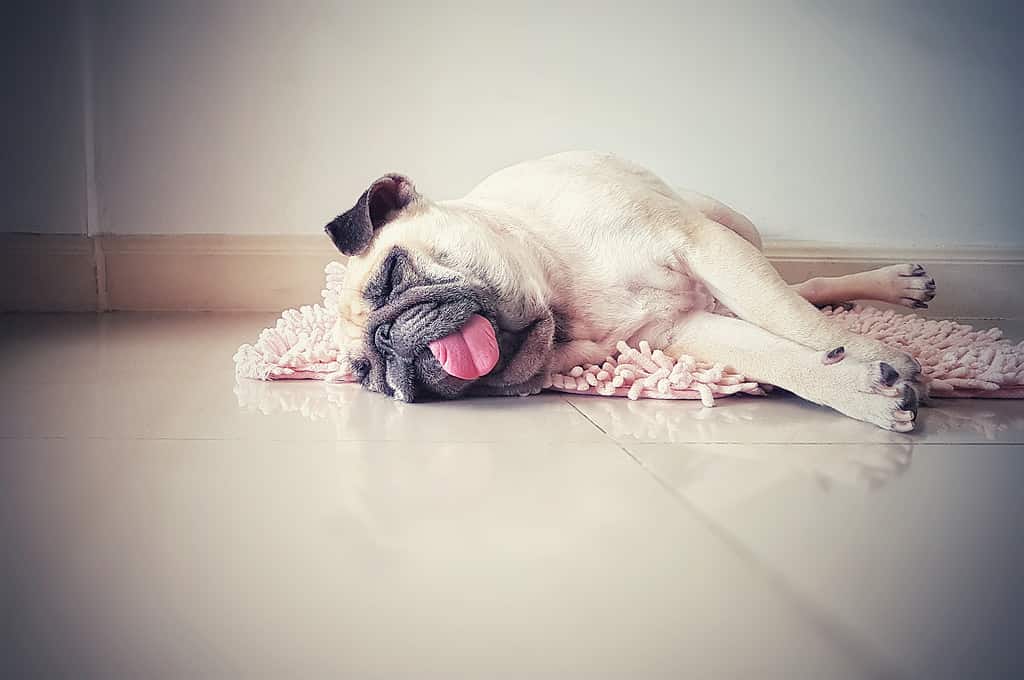
Pugs are popular pets and champion sleepers but are not good at swimming.
©fongleon356/iStock via Getty Images
The flat-faced pug is a brachycephalic dog that is not well adapted for the water. The pug’s dense, compact body, short legs, and big, boxy head make it difficult for them to stay afloat. As a result, they tire easily when attempting to swim. Their flat faces also increase the likelihood of inhaling water. Many pug owners invest in life jackets for their dogs to ensure they don’t drown.
7. Tortoise
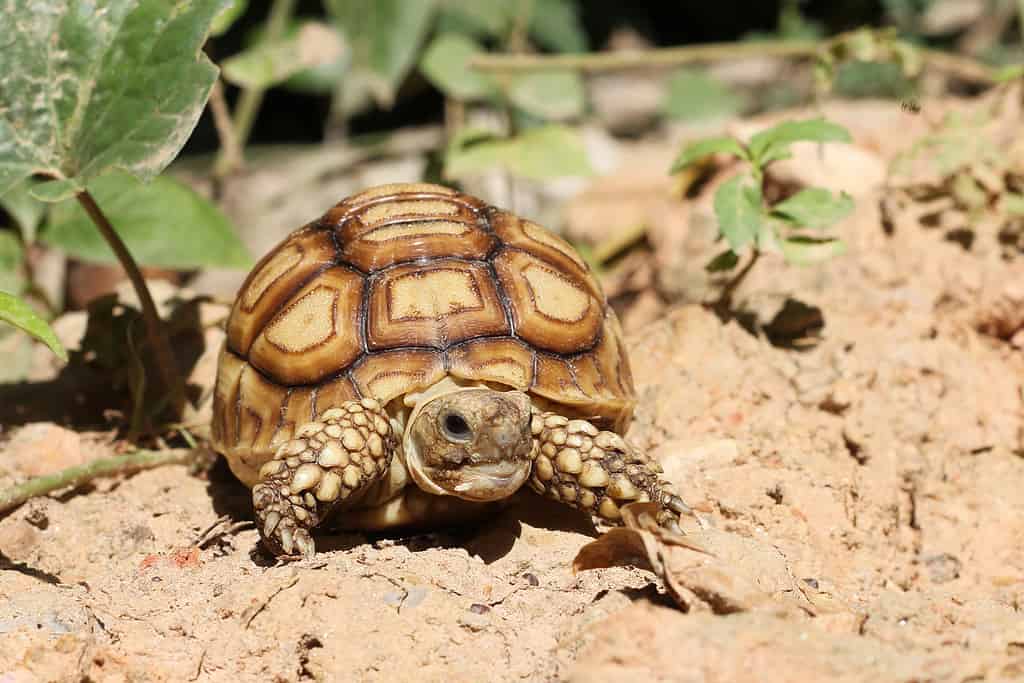
Due in part to their heavy, domed shells, tortoises cannot swim.
©Somedaygood/iStock via Getty Images
While many species of turtles live in the water and are strong swimmers, tortoises are a different story. Tortoises lack the flatter, streamlined shells of their aquatic turtle counterparts, and do not have flippers. Instead, tortoises have clawed toes and bent legs designed to lift their shells off of the ground. These feet are well suited for walking, but not swimming. Their large, domed, heavy shells also make swimming difficult.
Some tortoises can float to safety if gently placed in water, but it is best to leave these non-swimmers firmly on dry ground.
8. Parrot
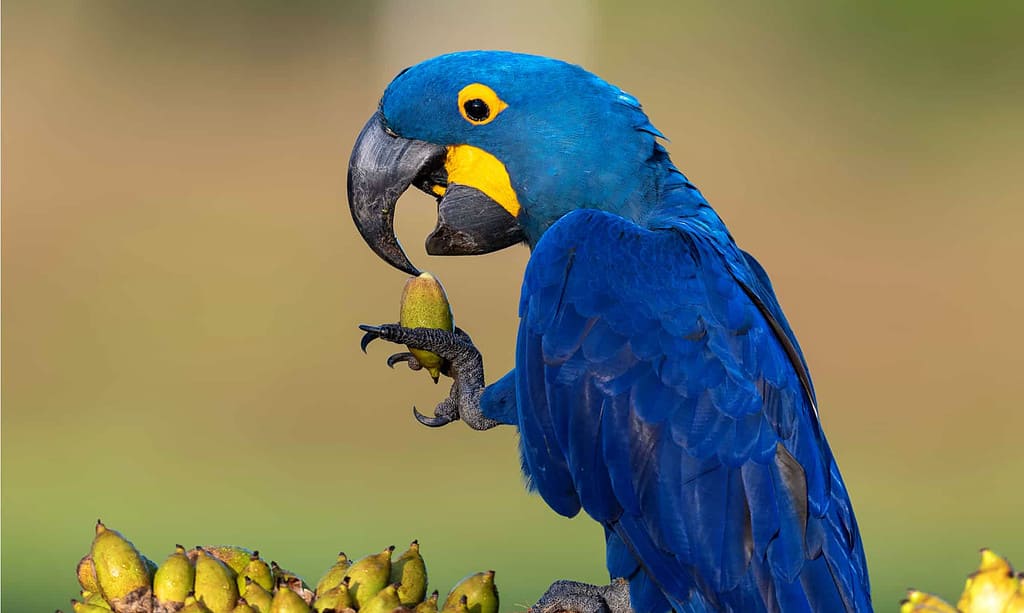
A parrot’s feet are designed for gripping, unlike those of ducks or geese.
©Reto Buehler/Shutterstock.com
Parrots may be able to talk, but they can’t swim. The parrot’s body is not designed to go in water. Unlike ducks, gulls, and other water birds, parrots don’t have webbed feet. Their feet are designed for gripping onto branches and perching, not paddling. However, parrots can float, thanks to their light weight and air sacks that run along their bodies. This gives them a natural buoyancy, at least temporarily.
9. Dachshund

Originally bred for hunting, dachshunds were used to flush animals out of burrows.
©James Player/Shutterstock.com
The dachshund is another short-legged dog breed that struggles in water. Their long bodies combined with small legs make it difficult for them to paddle through the water with enough force to keep them afloat. While these torpedo-shaped canines are well suited for wiggling into animal burrows to ferret out game, their streamlined form doesn’t help them in the water.
10. Armadillo
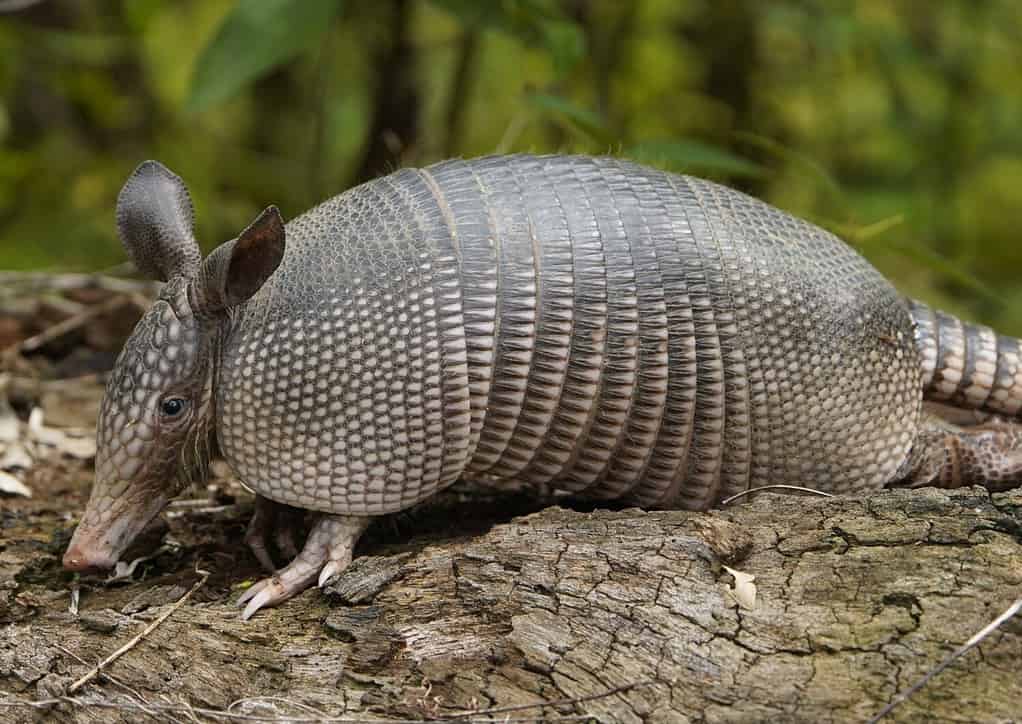
Nine-banded armadillos are nocturnal.
©guentermanaus/Shutterstock.com
An armadillo’s shell makes it too heavy to swim, but they do cross water when necessary. Instead of paddling, armadillos hold their breath and walk along the bottom of the stream or riverbed. The nine-banded armadillo can hold its breath for up to six minutes underwater, even though it is an animal that can’t swim.
11. Bassett Hound
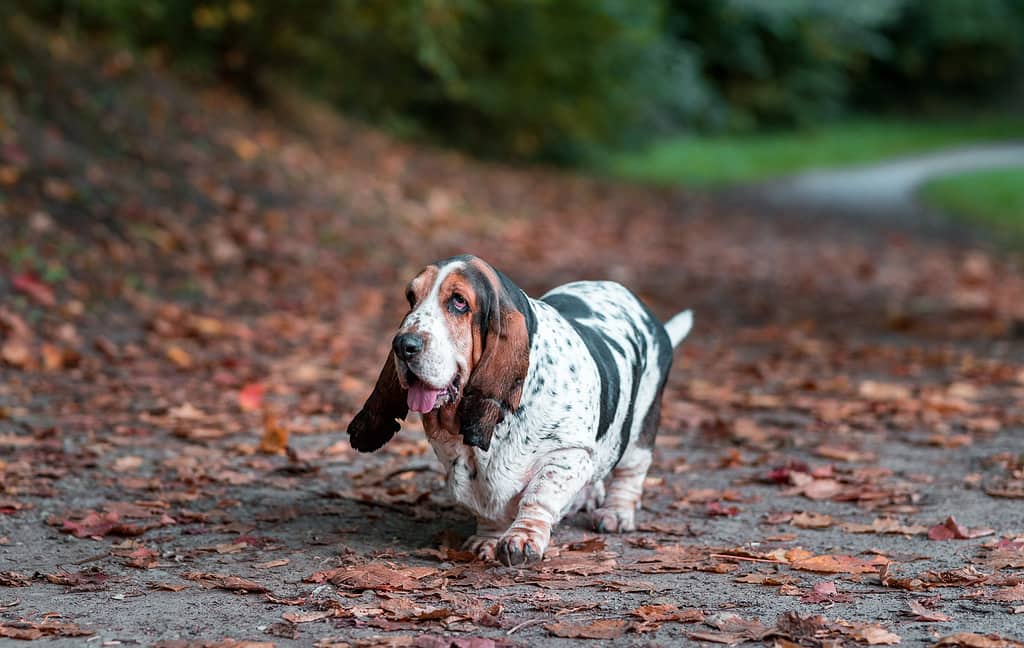
A
basset hound
holds the record for the longest ears, measuring just over a foot long.
©Mindaugas Dulinskas/iStock via Getty Images
Basset hounds struggle with the same challenges as dachshunds. Their short legs and long, stocky bodies are just not well adapted to water. When put in deep water, the back half of their bodies tend to sink, making it difficult to stay afloat and propel themselves through the water. Plus, who would want to get those gorgeous ears wet?
12. Prairie Dog
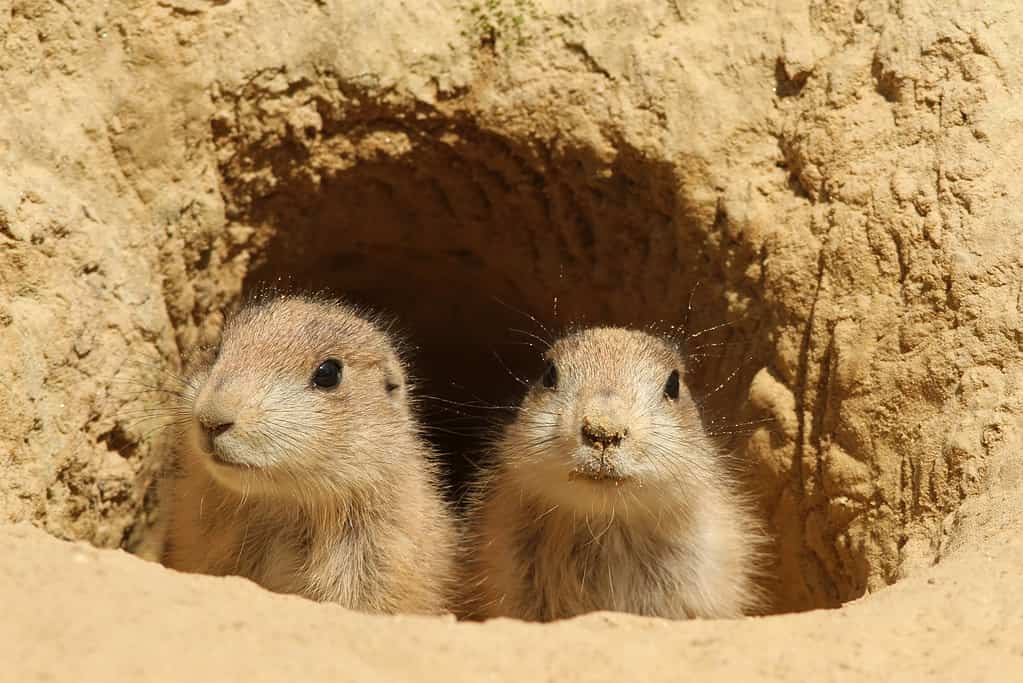
Around 50% of U.S.
prairie dog
populations can be found in Montana, Wyoming, and South Dakota.
©Henk Bentlage/iStock via Getty Images
The prairie dog is a great digger, but not a great swimmer. Prairie dogs have compact, stout bodies and short legs designed for burrowing, not paddling. Luckily, they rarely need to venture to bodies of water, as they get most of their fluids from the moisture in the plants they eat. Their elaborate burrows also provide them protection from predators, so there’s no need to try to evade becoming lunch by going swimming.
13. Black Rhinoceros
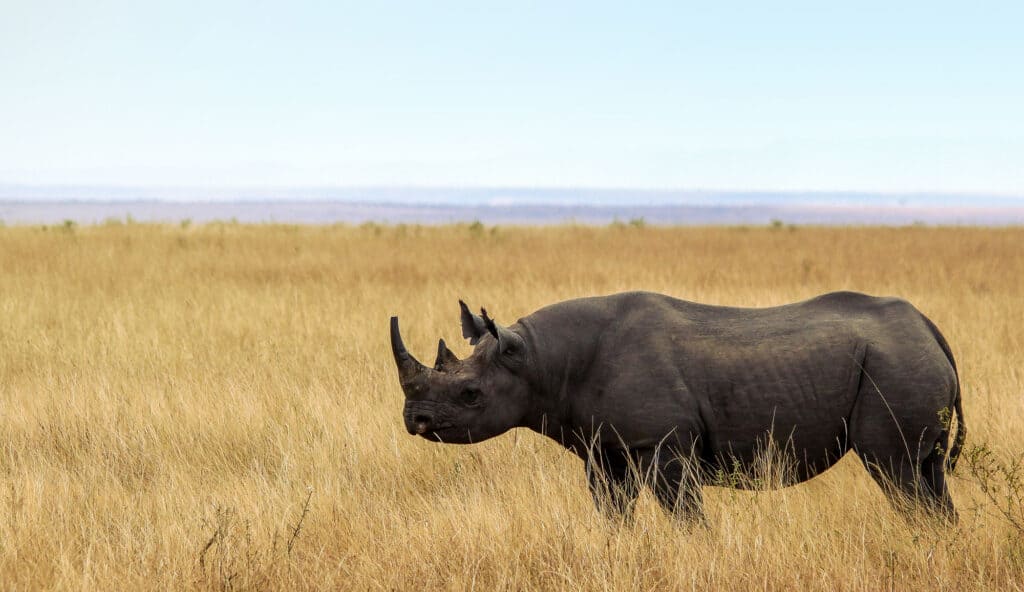
The black rhino is listed as critically endangered.
©iStock.com/Black Rhinoceros, Rhinoceros, Savannah, Tanzania, Animal
When it comes time to cool off, the black rhino heads for the mud, not open water. While Asian rhinos are good swimmers, the African species are not. Their thick, heavy bodies and short legs are not well adapted to the water, and they can easily drown in rivers or lakes.
Black rhinos don’t have a great need for water, however. They can go up to five days without water during droughts. When it gets really dry, rhinos will dig for water in dry riverbeds and lakes.
14. Chinchilla
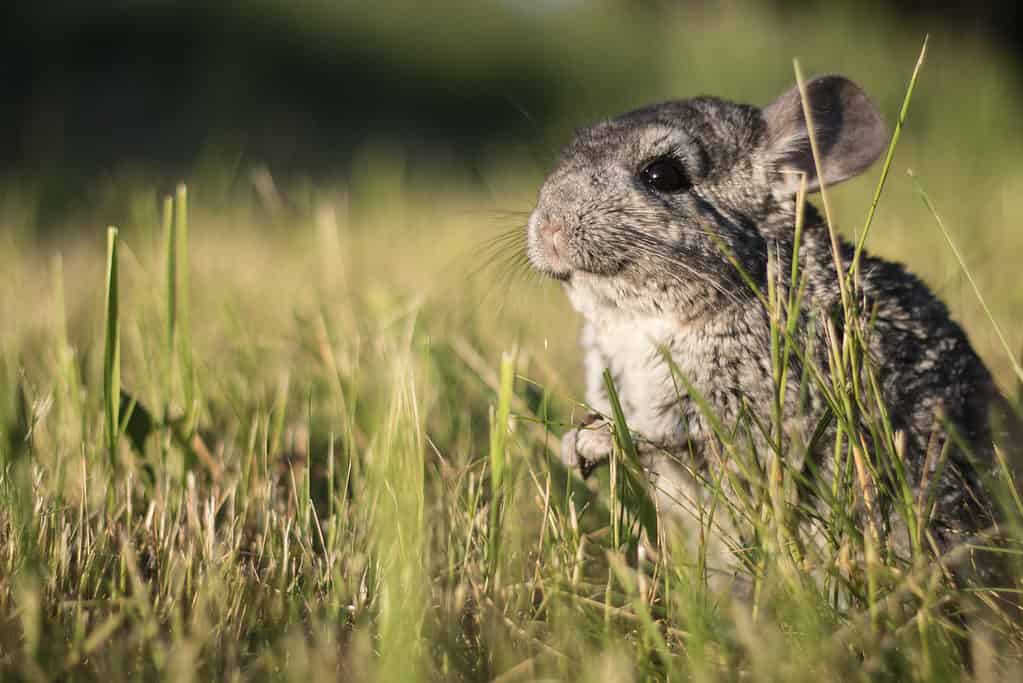
Chinchillas are native to South America.
©PawelPonichtera/Shutterstock.com
Chinchillas rarely encounter bodies of water in their natural habitat in the rocky, arid Andes Mountains in Bolivia, Peru, and Chile. When they do come across water, they tend to avoid getting wet. Chinchillas have incredibly dense coats, with 50-60 hairs per follicle. Additionally, their fur is not waterproof. This means it is very hard to dry once it gets wet. With over 20,000 hairs per square inch, moisture is easily trapped within a chinchilla’s fur. This can cause matting or even mold growth, both of which can be very bad for the animal’s health.
15. Portuguese Man o’ War
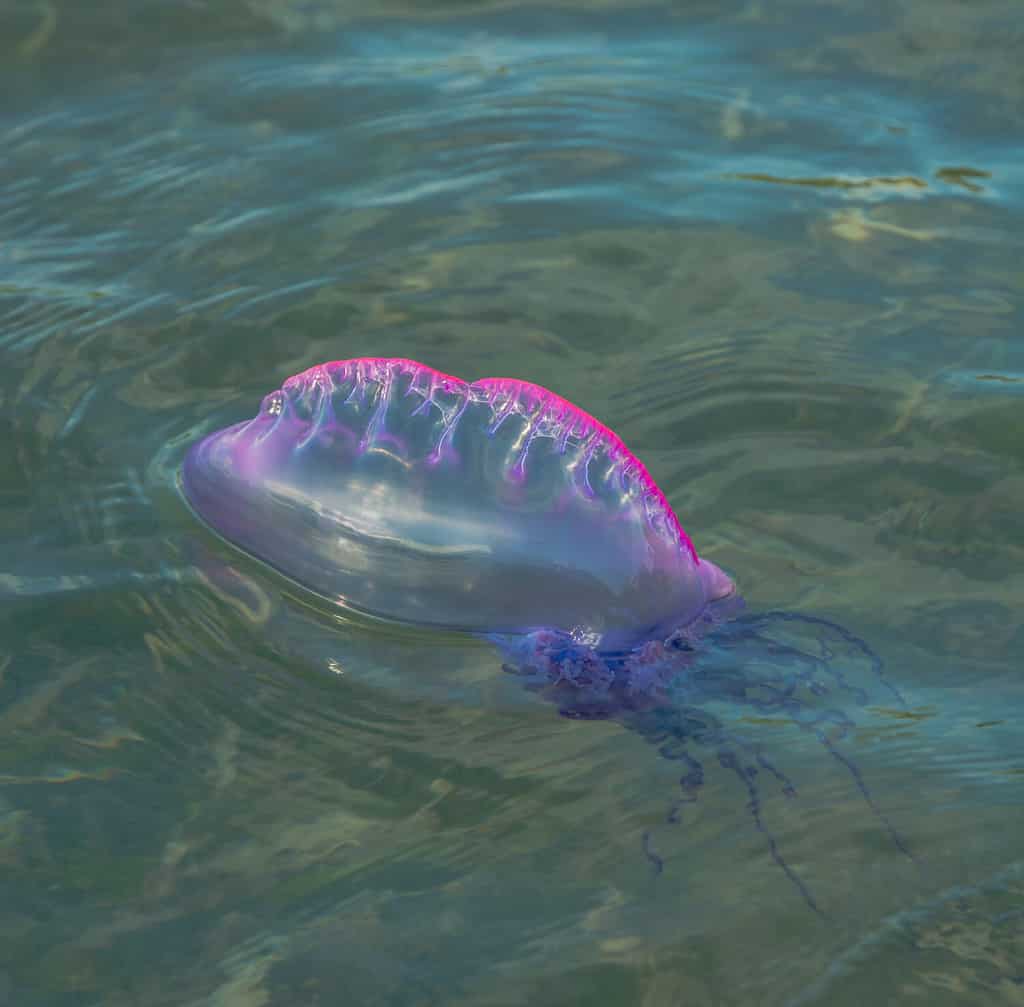
Although they can sting, Man o’ Wars are not
jellyfish
.
©Broadbelt/Shutterstock.com
It makes sense to assume that an ocean creature could paddle around, but the Portuguese Man o’ War is an animal that can’t swim. While many people assume it is a jellyfish (that swims by contracting and relaxing its muscles) Man o’ Wars are actually siphonophores. Instead of swimming, these fascinating creatures rely on wind and ocean currents to move.
Since they cannot move on their own, Portuguese Man o’ Wars have adapted so that their floats either lean right or left. This ensures that if a wind whips up, they will not all be propelled in the same direction, preventing entire colonies from becoming beached at once.
16. English Bulldog
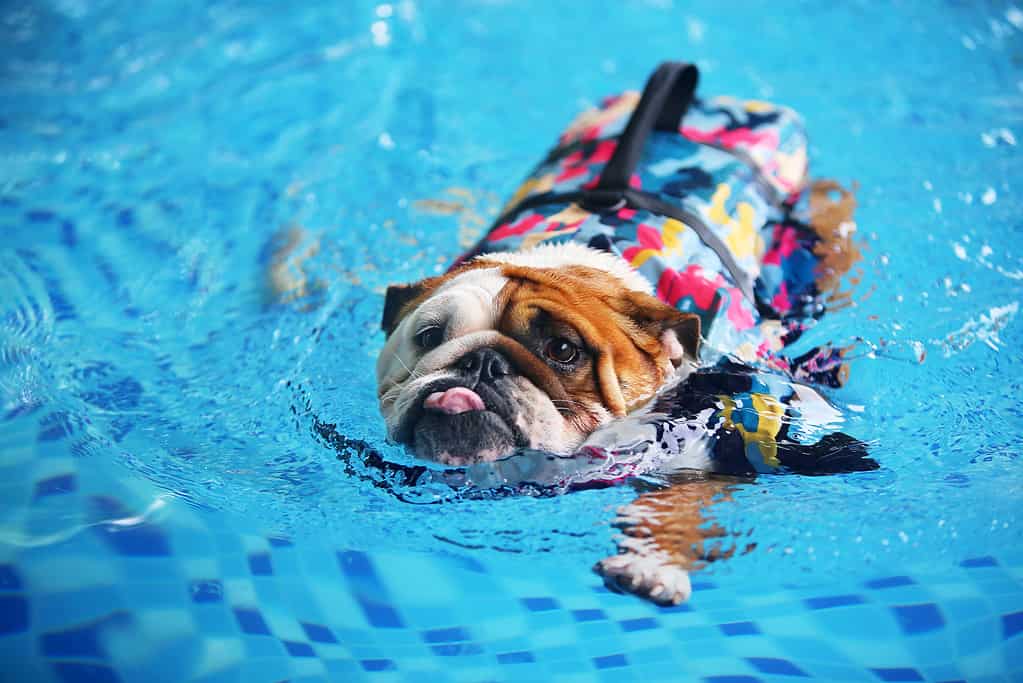
English bulldogs cannot swim on their own but won’t drown with the aid of a life jacket.
©Wasitt/iStock via Getty Images
The husky English bulldog may be the worst swimmer out of any dog breed. Their barrel chests, thick bodies, and muscular, stubby legs mean they are far more likely to sink than float. The bulldog’s flat face and heavy head also puts it at high risk for water inhalation. An estimated 5,000 dogs drown in pools every year, and many of them are bulldogs. This breed should be kept away from deep water unless equipped with a life jacket.
The photo featured at the top of this post is © Wim Hoek/Shutterstock.com
Thank you for reading! Have some feedback for us? Contact the AZ Animals editorial team.




